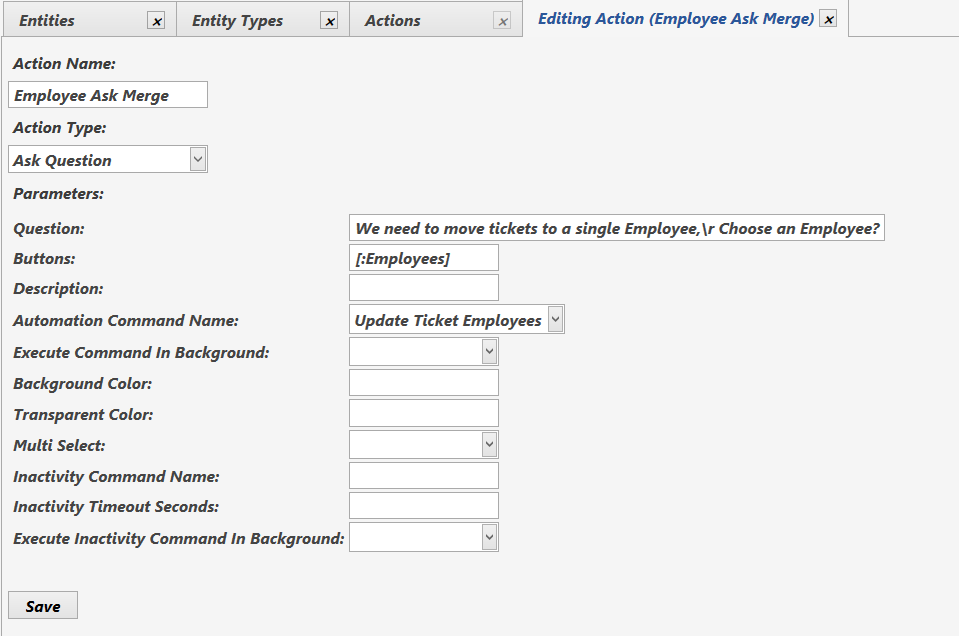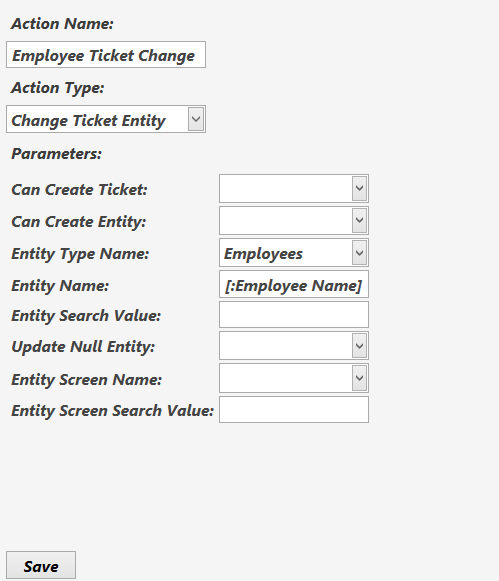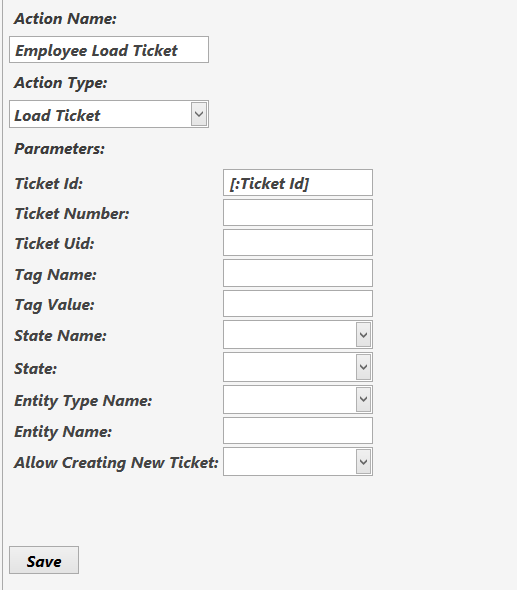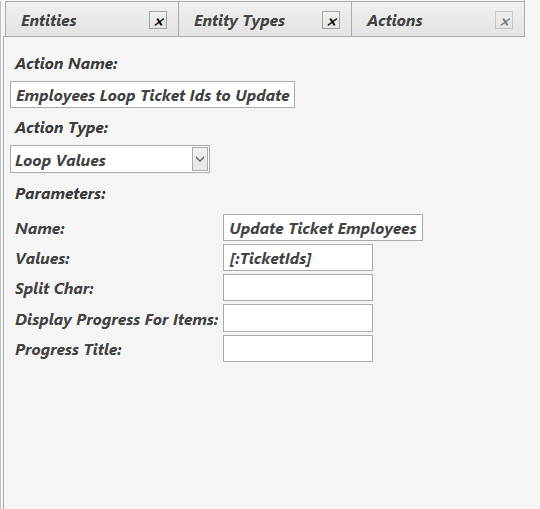That will work after .51 update.
This action asks employee and execute Update Ticket Employees command with selected employee name.
This Report Tag reads employee names from open tickets to create employee buttons.
{REPORT TICKET DETAILS:EN.Employee,EN.Employee.Count:(TEN.Tables=[:EntityName]) and ! T.IsClosed:{0}:,},Cancel
This rule handles Merge Test button click on Ticket List.
This function reads employee count.
{CALL:employee.countForTable('Employees','[:EntityName]')}
This rule works when we click on an employee name button.
You may wonder where [:TicketIds] coming from. That value set by Ticket List command and as ask question action transfers parameters to the command it executes we can access Ticket List screen parameters. So if you need [:EntityName] will resolve to table name or [:EntityId] will resolve to table entity id. Using rule debugger will reveal all available parameters at the time rule executes.
Let’s see how actions configured for Update Ticket Employee rule. This action executes a value looper that triggers a rule for each ticket.
This action merges tickets. This action is interesting because as Ticket List already builds a [:TicketIds] parameter we don’t need to re-supply it inside rule. That’s why I’ve collapsed that action in Update Ticket Employee Rule screen shot.
… and this one displays resulting ticket.
This rule does the most interesting job. It loads ticket, sets employee and closes ticket.
So [:LoopValue] gives us Ticket Id but how the heck [:CommandValue] returns employee name? This is AskQuestion Actions's Command Value. As it transfer’s it’s parameters I can access that value from here.
I’m trying to give more details about how we pass values across rules as I frequently notice people using settings feature to access such values. It might not be needed for some cases. As I’ve mentioned before you can use rule debugger to see which values are accessible to rule. You can use [:Value] syntax for reading such values.
So this is the end of complex part. These two actions used to update ticket employee.
Close ticket action is already a default action…
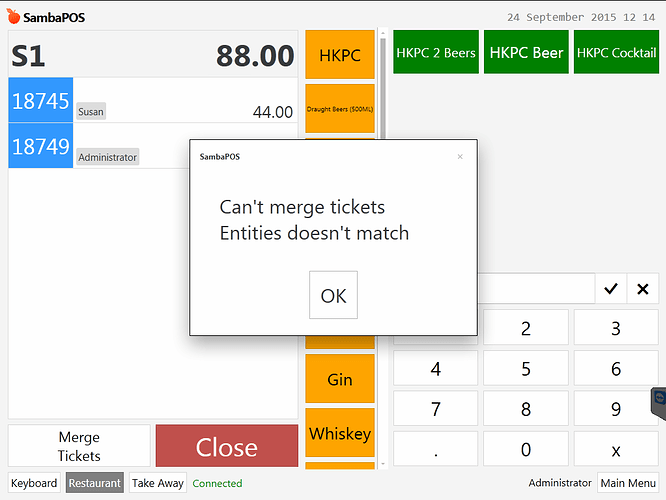
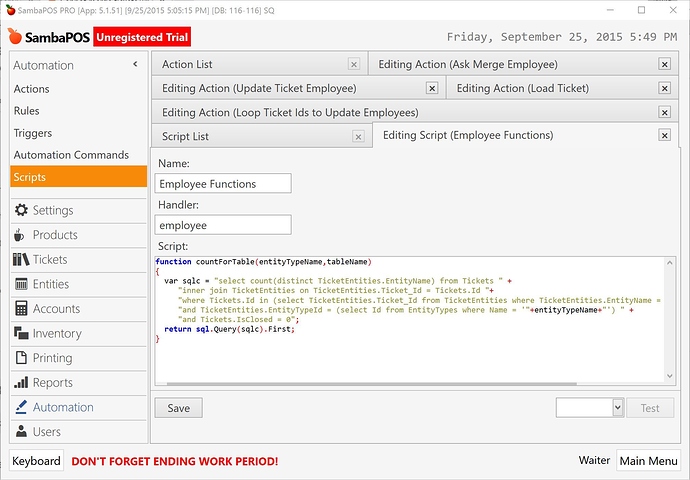
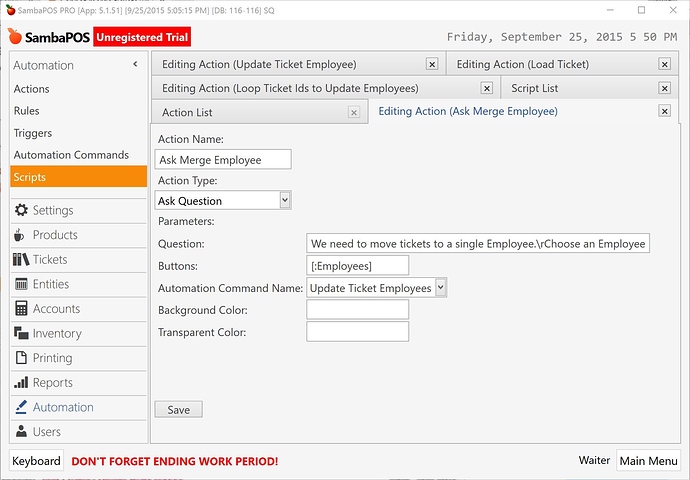
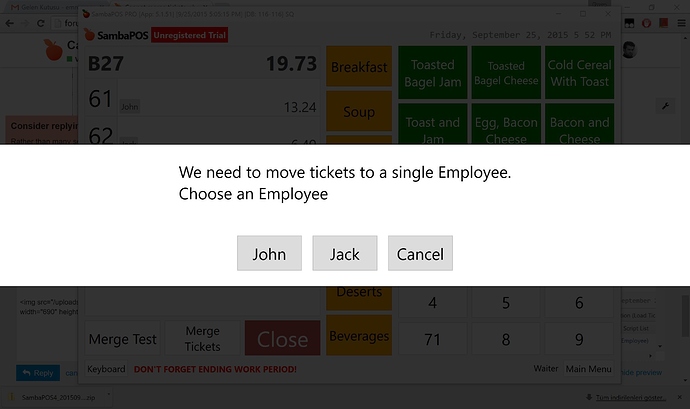

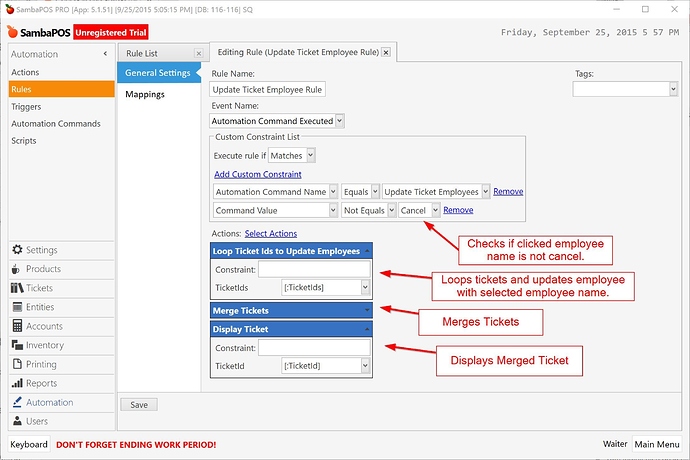
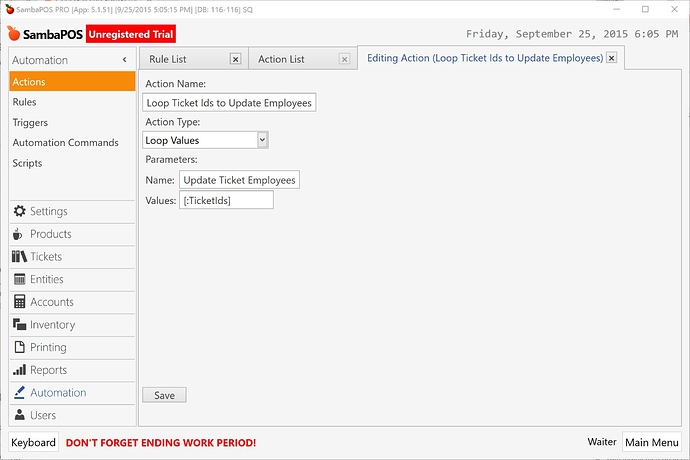
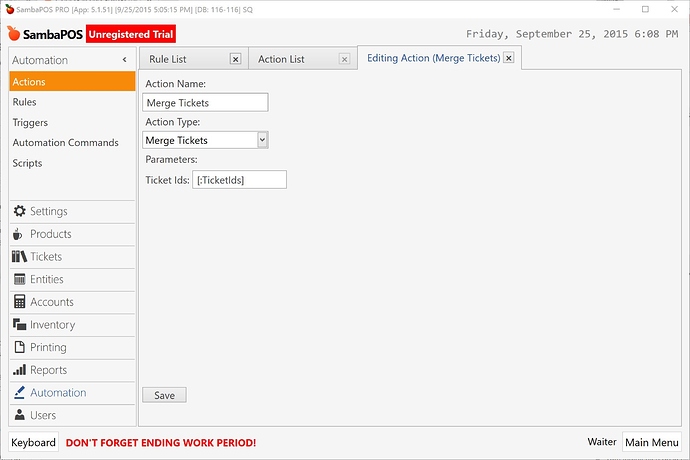
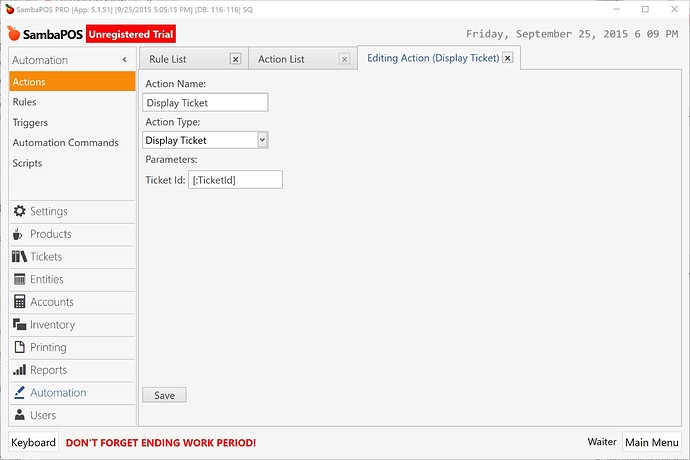
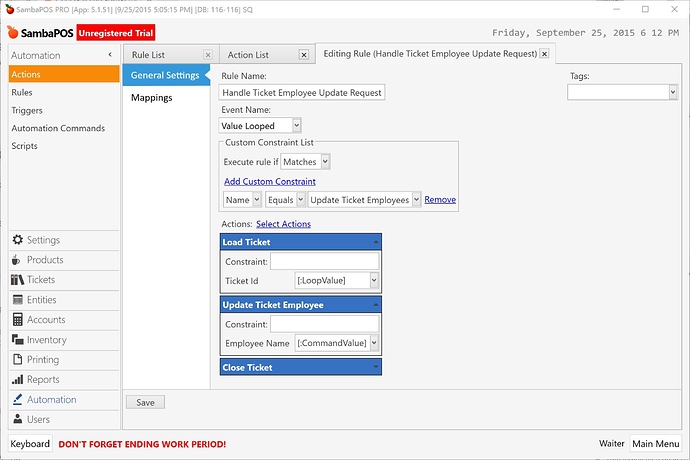

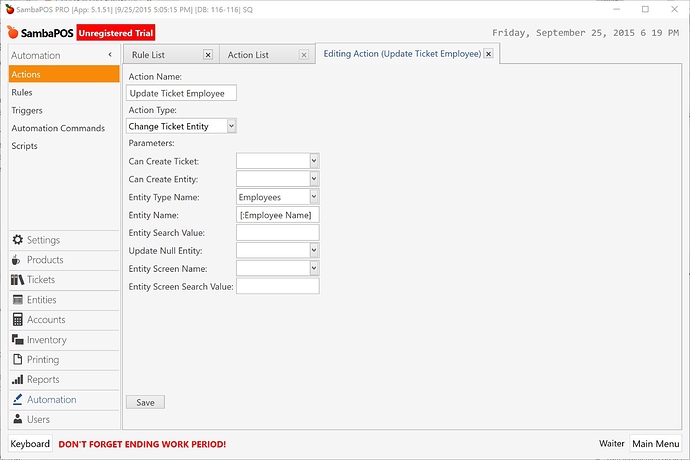
 <- Just could not find a picture of a head exploding lol
<- Just could not find a picture of a head exploding lol

